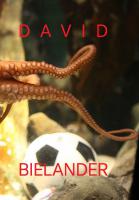©2017 arnoldsche Art Publishers, Stuttgart, David Bielander, Munich, and the authors [and translators!] ISBN 978-3-89790-487-3
Seven translations into English to be found in the enclosed booklet. Extracts from the first:
Objet trouvé, by Bernhard Schobinger
Sep 19, 2016 at 11:07 PM David Bielander wrote:
Precisely, dear Bernhard!
Great that you’ve written to me, and great the way you put the thought together.
Chicken and egg.
I’m just thinking that each of us maybe constructs his own way of working (a method) so as to handle what’s much-too-obvious about the ‘objet trouvé’, so that it can stay as proximate and direct and foolish as the way it sometimes is, and yet isn’t trite at the end.
Conditions conspire to ensure that the immediate, pressing, urgent, ‘obvious’ and at the same time – precisely – not directly tangibly accessible ‘solution’, if it is mature, suddenly gurgles out of some or other cerebral depths.
Morocco?
Yes, it can well be like lightning, Bernhard, your writing and thinking is strong, perhaps we should simply use this virtual correspondence?
Thank you.
Sep 16, 2016 at 05:42 PM Bernhard Schobinger wrote:
Hello David,
Lovely to hear from you and congratulations on the book project.
It would definitely be exciting to make a small contribution, at the moment I’m so inundated it’s almost scary. Scraps of ideas whizz through cerebral convolutions while waiting for the train. It has to go very fast. Like lightning out of the blue. Inspiration – a meteorite from the universe, chaos, the cosmos :))
Specifically in our case, the analytical approach to the genesis of works is of interest, because apparently diametrically opposed.
Indeed, it’s about these peculiar neuronal processes in which the creative hides, long before ideas take shape, are ‘realised’. Surrealists invoke the subconscious and dream images, Constructivists reason and Jung the ‘Collective Unconscious’.
What does the Sheriff care? I’ve never been any too worried on that account, more about the shooting stars, the strokes of inspiration, failing to be there one day or night. As artists, but otherwise too we can confidently dispense with epistemological babble (see Paul Feyerabend’s recommendation in ‘Science in a Free Society’) in order to come to the point.
When we bumped into each other in your exhibition at Felix Flury’s a few years ago you explained to me how your ‘sausage necklace’ came about. If I remember correctly it was your original intention to make a necklace out of sausages (interesting, how does one arrive at such an aim?); later, you said, while you were looking at a Vienna café chair, the connection to the idea – which was slumbering in a kind of stand-by mode – was pretty much ‘switched through’ to you, and thereby (only now) became realisable. The chair was the missing component, so to speak.
This way of thinking was completely new and disconcerting for me, although not inconceivable; why shouldn’t the opposite means also lead to the end? Let’s say: from the egg to the chicken! (A graphic juxtaposition of ‘sausage necklace’ and Vienna café chair would be good here.)
To get to my case: from the chicken to the egg. …
(… …)
Click on the poppy for more David Bielander
